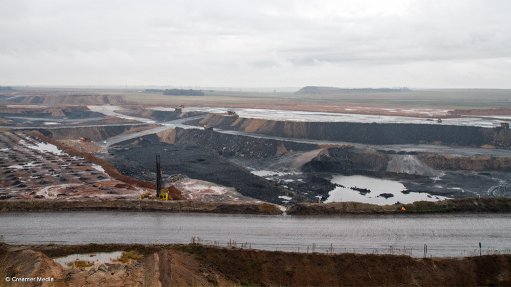
SEEKING A CHAMPION More ‘brave companies’ need to emerge, breaking out of the ‘boom or bust mentality’ by pushing their boards to unlock funds for the development of new projects
Photo by: Duane Daws
Several years of little or no investment in exploring for and developing new mining projects has resulted in the emergence of an impending commodities supply cliff in a number of resource sectors, says professional services firm EY Africa mining and metals transactions leader Quintin Hobbs.
Therefore, he contends that there will need to be more “brave companies” emerging that can break out of the “absolute general madness” of the ‘boom or bust’ mentality to push their boards to unlock funds for the development of new projects to ensure that miners do not miss out on the uptick that is occurring at this point in the commodity price cycle.
“If the minerals sector, broadly, waits for three years or more for the current global economic and political uncertainties to dissipate, they will almost certainly miss out,” Hobbs warns.
With regard to whether there is capital available in the market, Hobbs concedes that securing external sources of capital is difficult. However, he believes that raising capital needs to be done nimbly and creatively.
Hobbs holds that the biggest source of capital available is that which is internally generated by the mining houses. He notes that the mining industry recently had “a cash windfall of sorts”, owing to a general uptick in commodity prices over the past nine months. “This additional cash flow could be used to fund exploration, extensions and new mine developments.”
Hobbs tells Mining Weekly that 2016 was a “very difficult one” for the mining industry worldwide as there was a lot of volatility. Nonetheless, he points out that there was a surprisingly bullish market in the second half of the year, which, as a result, translated into many of the distressed transactions that analysts predicted not in fact occurring.
“This will likely mean that, in 2017, those companies that started their portfolio restructuring in 2016 will continue to execute those transactions. Therefore, we will see a wave of divestments, while I also think that a new trend of mergers occurring among midtier miners will develop,” states Hobbs.
Meanwhile, EY Africa mining and metals advisory leader Wim Hoogeduere says that from his engagements with industry insiders, there seems to be a degree of optimism regarding the prospects for the global mining industry and for Africa in particular this year.
He notes that the statements made by Mineral Resources Minister Mosebenzi Zwane during the recent Investing in African Mining Indaba, in Cape Town, signalling that the Department of Mineral Resources (DMR) is committed to ensuring an enabling environment for investment in South Africa’s mineral sector, have been received positively by the industry.
Further, Hoogedeure notes that the Minister said that the DMR was intent on ensuring that the amended Mineral and Petroleum Resources Development Act was processed and finalised “as a matter of urgency”. Zwane also said that he expected the whole process to be concluded by June.
Additionally, the Minister said he expected the new Mining Charter to be gazetted by the end of March and to be reflective of the views of stakeholders, in the interests of South Africa and provide for investor certainty. Hoogeduere says this commitment to ensuring regulatory certainty is another positive development for local miners and potential investors in South Africa’s mining sector.
While these are crucial developments, he says, innovation through an “ecosystem of sorts” will be key to the future success of the mining industry globally. Hoogeduere emphasises that this is more than just adopting new technologies and systems – it is also about adopting new attitudes and behaviours towards these innovations.
“This is crucially important, as, owing to the significant cutbacks that have taken place in the mining industry over the past three to five years, there is a lot of institutional knowledge that has been lost.
“Moreover, the mining industry is not as appealing as it once was and therefore it will be difficult to attract the best and brightest to the sector,” he highlights.
Hoogeduere stresses that, while mining firms are currently benefiting from increased cash generation, they to retain their lean operating model and not repeat the past mistake that many companies made of not investing and maintaining operating efficiencies and their fiscal frugalness when market conditions improve.
“Mining companies that continue to place substantial emphasis on cost efficiencies will ultimately be the ones that succeed best when price downturns occur,” he concludes.